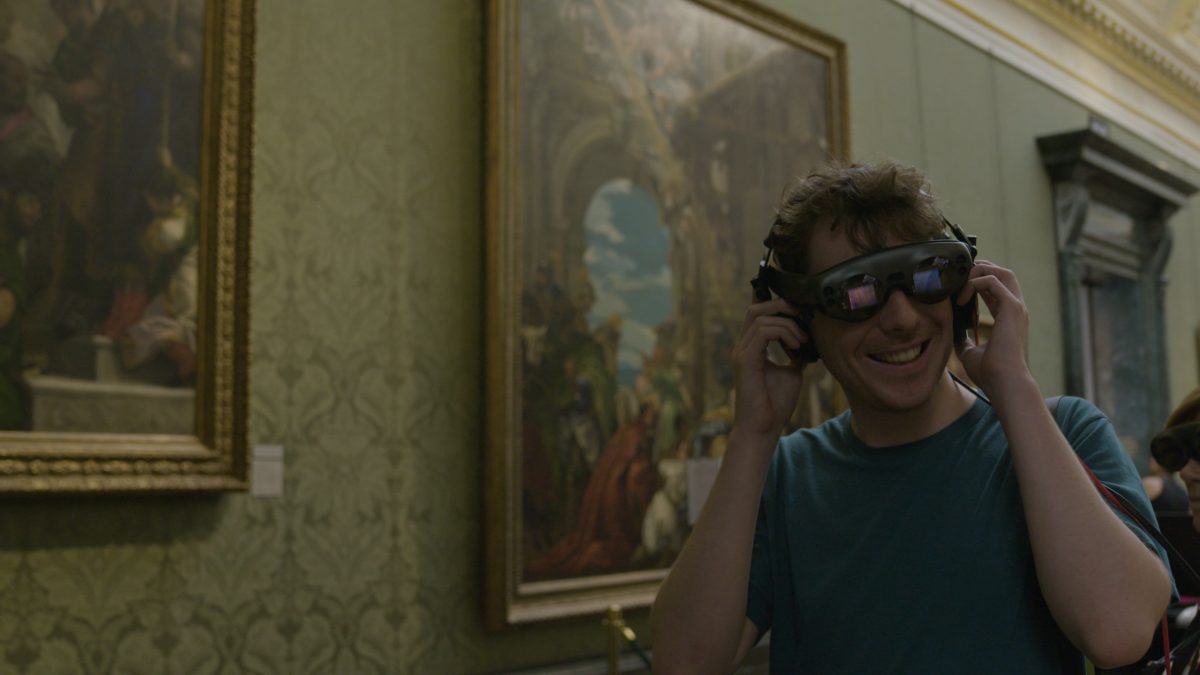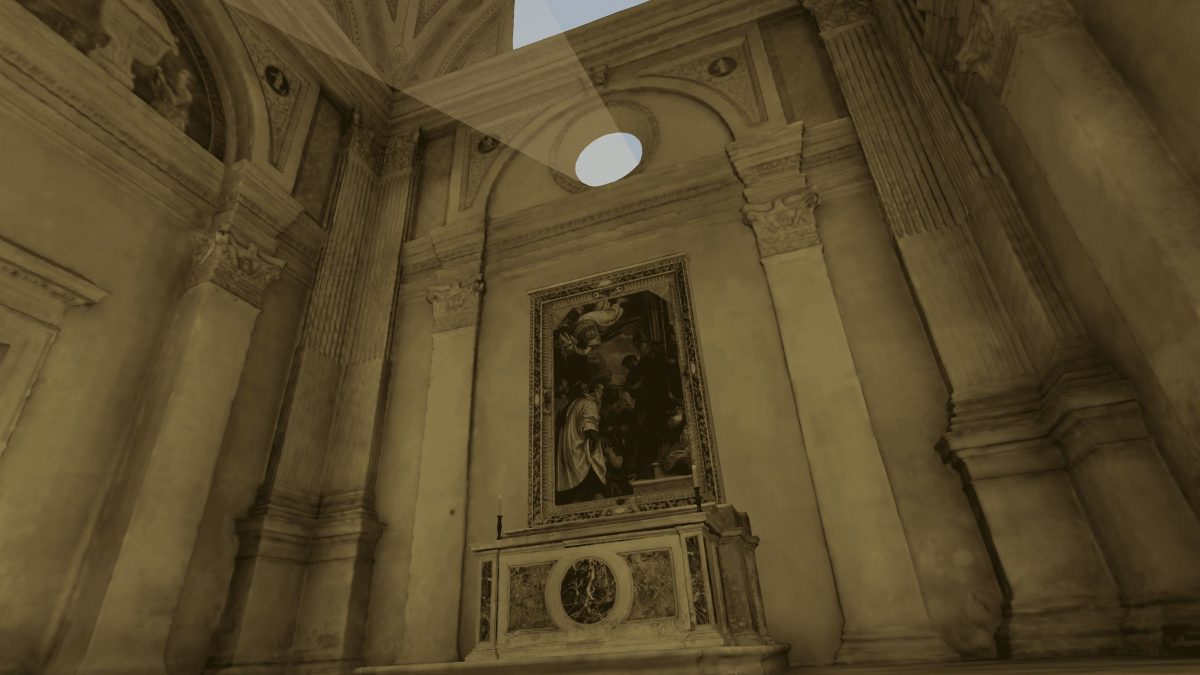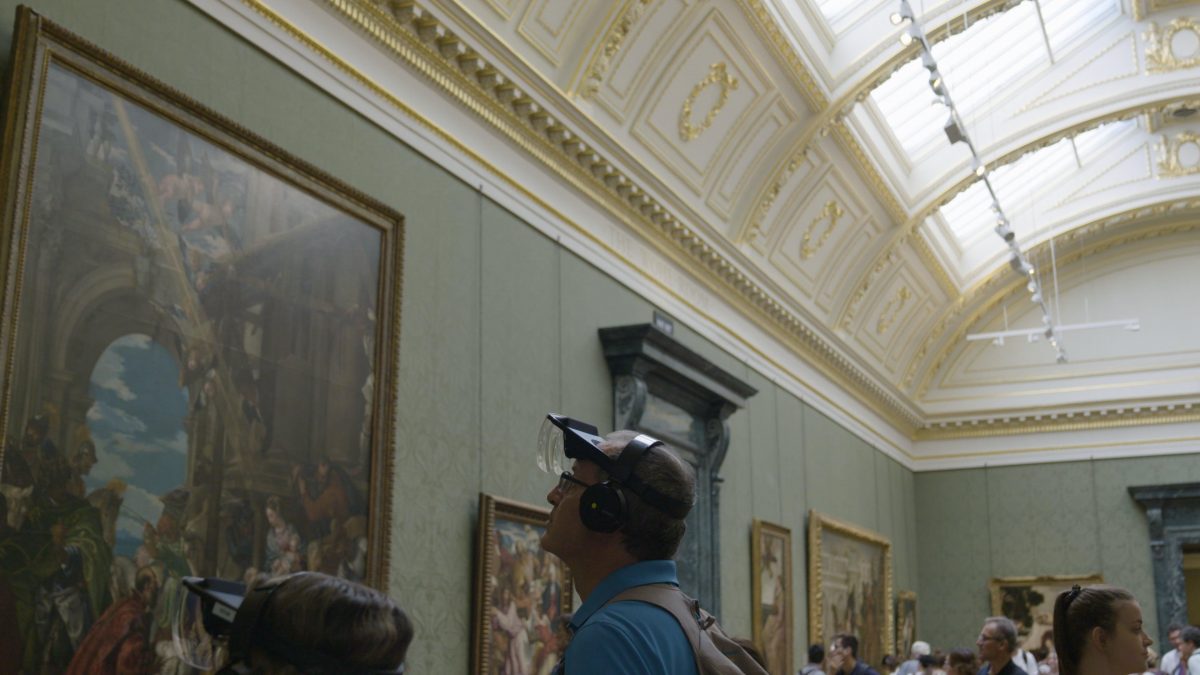Press Release 25th July 2019 - StoryFutures partners with the National Gallery to make Virtual Art History a Reality
‘Virtual Veronese’ is a first of its kind R&D prototype developed as part of the UK government’s Creative Cluster’s programme by StoryFutures, a consortia led by Royal Holloway, University of London. StoryFutures & The National Gallery invite you to step back in time and experience Paolo Veronese’s ‘The Consecration of Saint Nicholas’ as it would have been seen in 1562.

Many of the National Gallery’s paintings would have originally hung in spaces that are very different to the gallery setting they are in today. Veronese’s ‘The Consecration of Saint Nicholas’ was commissioned in 1561 as an altarpiece to hang in the church of San Benedetto al Po, near Mantua, Italy.
In a two-week trial running from 23rd July to the 5th August, visitors to The National Gallery will be able to experience the history of this Renaissance masterpiece in a completely new way. Through this prototype, visitors will experience new forms of immersive storytelling to understand what this painting would have meant in 16th century Italy. With the inquisition at the height of its powers, a Catholic Church anxious about growing Lutheran influence you will hear how the simple commissioning of a painting was a powerful act of loyalty to Rome. As a guide to this experience you can choose either Veronese’s patron and Abbot of San Benedetto al Po, Andrea Asola; or, The Howard and Roberta Ahmanson Fellow in Art and Christianity at the National Gallery, Dr Rebecca Gill. Dr Gill oversaw the complete volumetric capture of the church, and conducted research which contributed to the prototype.
Lawrence Chiles, Head of Digital Services at the National Gallery said “We’re thrilled to bring this exciting research project to fruition, which helps achieve our ambitions for innovation at the Gallery. It will help us understand how our visitors respond to new technologies and enable us to tell the stories behind our art in new and compelling ways”.
Professor James Bennett, Director of StoryFutures, said “We hope this gives visitors to the National Gallery a real feeling for the magic and transformative nature of what immersive storytelling can do. This is research that tests out the potential for immersive storytelling to engage audiences in new ways and showcases the brilliance of companies in our creative cluster like Focal Point VR”. Will Saunders, Executive Producer said, “we hope audiences will love this experience and that StoryFutures’ work can help organisations like the National Gallery adopt cutting edge technology and innovation in story form to help the UK become a world leader”.

'Virtual Veronese' is a research and development project looking at how we can share research with a wider audience by using immersive technologies to explore new ways of telling stories. The project will enable us to understand how immersive storytelling can add depth of information, meaning and emotion to the National Gallery visitors’ experiences of their paintings. It is a first of its kind prototype that will be further developed on the basis of audience research conducted during this two-week trial. StoryFutures exists to fuel innovation and growth in immersive storytelling and is funded as part of AHRC’s Creative Clusters programme. It links SME’s across the South East’s Gateway Cluster with University research resource and large scale organisations like The National Gallery, Heathrow Airport & BBC Studios to develop immersive pilots & prototypes.
'Virtual Veronese' was produced by leading Guildford based Creative Technology business Focal Point. Ian Baverstock, Chairman of Focal Point VR stated…
"The opportunity to tell the story of this amazing painting was a great challenge. We wanted visitors to understand the political and religious significance of the art but in a short, intense experience. Most of all, we really wanted the viewer to directly connect the painting on the gallery wall in front of them with the dramatic developments in European history that it symbolises from 400 years and 2000 miles away. Using AR or VR based on the painting is a great way to make that connection".
Initial responses from its audience testing in the gallery are overwhelmingly positive. One art and history teacher stated… “It brought the era of the painting to life, I’d love to use this with my students”. Another gallery visitor said, “I really felt I was in the church with the monks”.
‘Virtual Veronese’ is live in the National Gallery until the 5th August. https://www.nationalgallery.org.uk/whats-on/virtual-veronese
Supported by Howard and Roberta Ahmanson.

ABOUT STORYFUTURES
StoryFutures is on a mission to support small and medium creative businesses in the Gateway Cluster to the West of London, to kickstart innovate R&D projects in immersive storytelling. For more information sign up to our newsletter or follow us on Twitter @storyfutures
ABOUT FOCAL POINT VR
Focal Point VR is a mixed reality video technology company with deep experience building and delivering technically innovative solutions and content for AR, VR, MR. Focal Point VR has developed an end to end UHD+ 360 live stream video platform which it offers to clients through a range of products and as a full production service. Focal Point VR has a proven track record delivering experiences for a wide range of platforms including PC VR, Mobile VR, Hololens and ARKit/ARCore.
ABOUT CREATIVE CLUSTERS
The Creative Industries Clusters Programme starting in 2018, will invest £80m in eight new creative research & development partnerships bringing together the UK’s renowned creative industries with arts and humanities led research from our world-leading university sector. The Programme will act as a catalyst to further grow the creative economy unlocking emerging fields and adapting new technologies with a new wave of R&D that will open up exciting ways to create, distribute, and participate in products and experiences.
This is part of the £80 million Creative Industries Clusters Programme, which is being funded by the Industrial Strategy and delivered by the Arts and Humanities Research Council on behalf of UK Research and Innovation